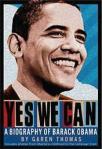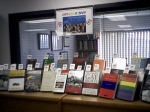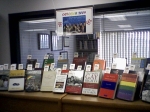“Whereas the law is passionless, passion must ever sway the heart of man.”
– Aristotle
 Federal Judges Revealed
Federal Judges Revealed
William Domnarski
KF372 .D66 2009
From the Publisher: The power and influence of the federal judiciary has been widely discussed and understood. And while there have been a fair number of institutional studies-studies of individual district courts or courts of appeal–there have been very few studies of the judiciary that emphasize the judges themselves. Federal Judges Revealed considers approximately one hundred oral histories of Article Three judges, extracting the most important information, and organizing it around a series of presented topics such as “How judges write their opinions” and “What judges believe make a good lawyer.”
 Louis D. Brandeis: A Life
Louis D. Brandeis: A Life
Melvin I. Urofsky
KF8745.B67 U749 2009
From the Publisher: Louis Dembitz Brandeis had at least four “careers.” As a lawyer in the late nineteenth and early twentieth centuries, he pioneered how modern law is practiced. He, and others, developed the modern law firm, in which specialists manage different areas of the law. He was the author of the right to privacy; led the way in creating the role of the lawyer as counselor; and pioneered the idea of pro bono publico work by attorneys. As late as 1916, when Brandeis was nominated to the Supreme Court, the idea of pro bono service still struck many old-time attorneys as somewhat radical.
Between 1895 and 1916, when Woodrow Wilson named Brandeis to the Supreme Court, he ranked as one of the nation’s leading progressive reformers. Brandeis invented savings bank life insurance in Massachusetts (he considered it his most important contribution to the public weal) and was a driving force in the development of the Federal Reserve Act, the Clayton Antitrust Act, and the law establishing the Federal Trade Commission.
[…] Brandeis as an economist and moralist warned in 1914 that banking and stock brokering must be separate, and twenty years later, during the New Deal, his recommendation was finally enacted into law (the Glass-Steagall Act of 1933) but was undone by Ronald Reagan, which led to the savings-and-loan crisis in the 1980s and the world financial collapse of 2008.
We see the brutal six-month confirmation battle after Wilson named the fifty-nine-year-old Brandeis to the court in 1916; the bitter fight between progressives and conservative leaders of the bar, finance, and manufacturing, who, while never directly attacking him as a Jew, described Brandeis as “a striver,” “selfadvertiser,” “a disturbing element in any gentleman’s club.” Even the president of Harvard, A. Lawrence Lowell, signed a petition accusing Brandeis of lacking “judicial temperament.” And we see, finally, how, during his twenty-three years on the court, this giant of a man and an intellect developed the modern jurisprudence of free speech, the doctrine of a constitutionally protected right to privacy, and suggested what became known as the doctrine of incorporation, by which the Bill of Rights came to apply to the states.
Brandeis took his seat when the old classical jurisprudence still held sway, and he tried to teach both his colleagues and the public– especially the law schools–that the law had to change to keep up with the economy and society. Brandeis often said, “My faith in time is great.” Eventually the Supreme Court adopted every one of his dissents as the correct constitutional interpretation. A huge and galvanizing biography, a revelation of one man’s effect on American society and jurisprudence, and the electrifying story of his time.
 Harry A. Blackmun: The Outsider Justice
Harry A. Blackmun: The Outsider Justice
Tinsley E. Yarbrough
KF8745.B555 Y37 2008
From the Publisher: Harry A. Blackmun: The Outsider Justice is Tinsley E. Yarbrough’s penetrating account of one of the most outspoken and complicated figures on the Supreme Court. As a justice, Blackmun stood at the pinnacle of the American judiciary. Yet when he took his seat on the Court, Justice Blackmun felt “almost desperate,” overwhelmed with feelings of self-doubt and inadequacy over the immense responsibilities before him. Blackmun had overcome humble roots to achieve a Harvard education, success as a Minneapolis lawyer and resident counsel to the prestigious Mayo Clinic, as well as a distinguished record on the Eighth Circuit federal appeals court. But growing up in a financially unstable home with a frequently unemployed father and an emotionally fragile mother left a permanent mark on the future justice.
All his life, Harry Blackmun considered himself one of society’s outsiders, someone who did not “belong. Remarkably, though, that very self-image instilled in the justice, throughout his career, a deep empathy for society’s most vulnerable outsiders–women faced with unwanted pregnancies, homosexuals subjected to archaic laws, and ultimately, death-row inmates. To those who saw his career as the constitutional odyssey of a conservative jurist gradually transformed into a champion of the underdog, Blackmun had a ready answer: he had not changed; the Court and the issues before them changed. The justice’s identification with the marginalized members of society arguably provides the overarching key to that consistency.
 Sonia Sotomayor:An Introduction to the Prospective Supreme Court Justice
Sonia Sotomayor:An Introduction to the Prospective Supreme Court Justice
Margarita Amador
KF8745.S68 A437 2009
From the Publisher: Sonia Sotomayor is the first Hispanic woman to be nominated to the Supreme Court of the United States. The Bronx-born Puerto Rican is an embodiment of the American Dream, working hard since childhood to rise from poverty to wealth and influence. With a strong Democratic majority in the Senate, she should easily be confirmed. So, who is the woman well-positioned to become the next Supreme Court Justice? Where did she come from and how did she reach this point in her career? Most importantly, what does she believe, and what might Americans expect from her as a judge? Sonia Sotomayor: An Introduction to the Prospective Supreme Court Justice is an overview of her inspiring life story, a record of some of her major decisions as a judge, and a brief sample of the dramatic controversy which has accompanied her nomination.
 Yes We Can: A Biography of Barack Obama
Yes We Can: A Biography of Barack Obama
Garen Thomas
E901.1.O23 T46 2008
From the Publisher: In third grade, Barack Obama wrote an essay titled, “I Want to Become President”— and he is, to this day, determined to show the world that, yes, he can. Born in the U.S.A., the son of an African father and an American mother, a boy who spent his childhood in Indonesia and Hawaii, Barack Obama is truly a citizen of the world. His campaign for the presidency is powered by a fierce optimism, an exuberant sense of purpose and determination, and, above all, a belief that change can happen.
Garen Thomas takes us through the life of Barack Obama, from his struggle to fit in with his classmates and concern about not knowing his biological father, through his term as Illinois senator, to his historic and momentum-building run for president of the United States. Barack Obama is a man who uses his words to inspire us. We can have a better future. We can be whatever we want to be. Yes. We. Can.

















